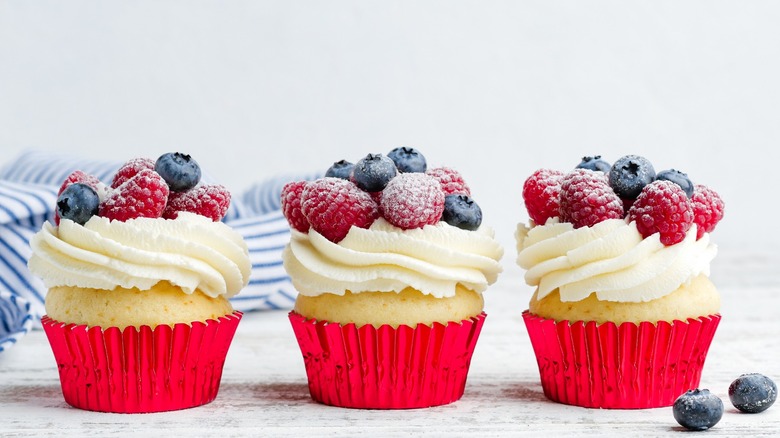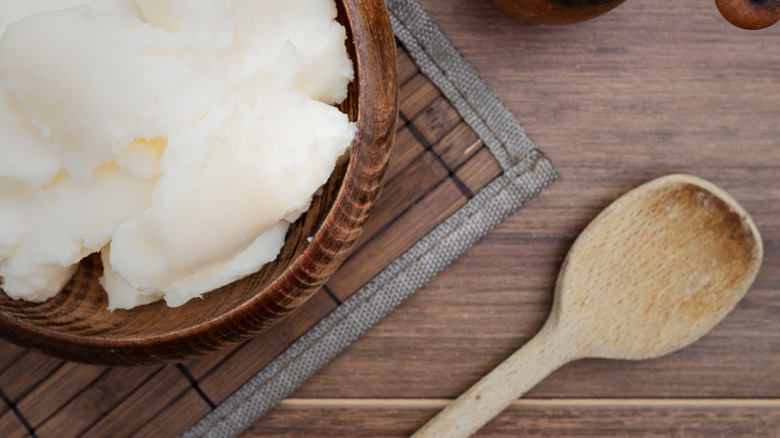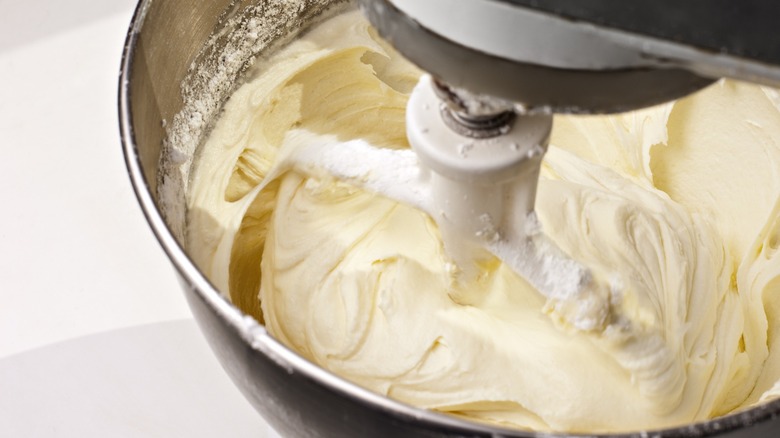Shortening Is The Secret To Super Fluffy Homemade Frosting
Sometimes, we search the internet for the perfect recipe, but end up coming back to grandma's old recipe tin. As it turns out, there are a lot of old-fashioned tricks that are key to revitalizing your kitchen game. This is particularly true of baking. After all, you can't beat a slice of delicious homemade cake topped with the fluffiest icing. And what's the secret behind this fluffy and delicious icing? Shortening. That's right, the secret to a perfect dollop of frosting might just be found right there in your pantry.
Shortening makes an excellent base for frosting for several reasons. Shortening is essentially any fat that is solid at room temperature and includes products such as lard. However, the product that most people have come to associate with shortening is Crisco, which is a shelf-stable fat made from vegetable oil. And it's Crisco that you will want to reach for when adding shortening to your frostings, as it offers a neutral flavor and the ability to stay solid at room temperature. This makes frostings made with shortening less likely to melt when applied to cakes and other baked goods.
This product can also produce a fluffier frosting than butter, thanks to its higher fat content. Shortening consists entirely of fat, whereas butter consists of only about 80% fat. This is because fat molecules are less dense than water, meaning that it has less weight by volume than water. Shortening is therefore significantly lighter and can therefore yield a fluffier result.
Why shortening is so effective in frosting
But shortening's ability to make fluffier frosting isn't its only benefit. Shortening is also shelf stable, meaning that cakes frosted with shortening can be left at room temperature for several days. Other frostings, such as buttercreams – at least buttercreams that don't include eggs, cream cheese, or whipped cream — can also last a few days at room temperature as well. However, butter-based buttercreams may begin to melt if left unrefrigerated. Meanwhile, shortening-based frostings can be left at room temperature for up to two days and aren't at risk of melting as much as butter-based frostings are. Additionally, many shortenings, such as Crisco, are vegan, making them a perfect alternative for those with certain dietary restrictions.
And you won't have to worry about your shortening-based icing wilting, either. This is because shortening has a higher melting point than butter, meaning that shortening-based icings can hold up in hotter weather. Additionally, its higher melting point means that you won't have to be so cautious about frosting a slightly warm cake, as shortening icing is less likely to melt or lose its shape. Additionally, shortening's pure, white coloring can make for the perfect and bright white icing for cakes, cupcakes, and cookies, especially if it is made with confectioners sugar and clear vanilla extract.
Shortening and butter can work together in your frosting
For those used to whipping up butter-based frostings, it might seem intimidating to make the switch to shortening. However, it doesn't have to be an all-or-nothing switch. Though pure, shortening-based frostings are an option for home bakers and are popularly used in commercial bakeries, you can always take a more balanced approach to your use of shortening.
And there is no reason to choose either butter or shortening when you can always use both. To make the perfectly balanced butter and shortening frosting, use a one-to-one ratio of both. This will give your frosting the fabulous texture of shortening and the delicious and irreplaceable flavor of butter. Doing so will also give your icing some of the same benefits of shortening frosting, including a higher level of heat endurance. So, the next time you are cooking up a delicious cake, you might want to consider pulling out your tub of shortening rather than butter for your icing endeavors.


